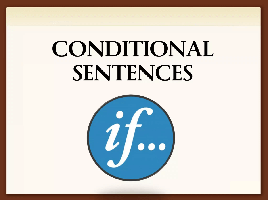Past Tenses in English: Forms and Their Usage
Oleksandra Kulish
Book expert
The past tenses in English are indispensable when it comes to describing events in the past. Let's consider how and when to use Past Simple, Past Continuous, Past Perfect, Past Perfect Continuous, and various expressions with examples and all their features.

Main types of past tense in English
In English, four tense forms (past tenses) are distinguished. Here is a convenient table for their comparison.
|
Tense |
Formula (V - verb) |
When used |
Example |
|
Past Simple |
subject + V2 / V(ed) |
completed action in the past, with a time/date |
I visited London last year. |
|
Past Continuous |
was/were + V-ing |
action was ongoing at a specific moment in the past |
I was reading a magazine at 3 p.m. yesterday. |
|
Past Perfect |
had + V3 |
action happened before another past action |
She had already left when I arrived. |
|
Past Perfect Continuous |
had been + V-ing |
action lasted for a certain time before another action |
She had been working at the cafe all morning before her friends arrived. |
Past Simple
Past Simple (past simple tense) — one of the most used tenses in English. With its help we describe events that happened in the past, and sometimes situations relevant in the present. Let's talk about how and when Past Simple is used.
Affirmative sentence
To form the Past Simple, add the ending -ed to regular verbs (work — worked, learn — learned, ask — asked). If the verb is irregular, the Past Simple form is taken from the second column of the irregular verbs table.
Examples:
- I cooked. — I cooked.
- He wrote. — He wrote.
- She watched. — She watched.
- It rained. — It rained.
- We visited. — We visited.
Structure: I/He/She/It/We/You/They + 2nd form of the verb
Negation
In negative sentences, the auxiliary verb did and the particle not appear. After did, the main verb is in the infinitive without to.
Examples:
- I did not cook. — I did not cook.
- He did not write. — He did not write.
- She did not watch. — She did not watch.
- It did not rain. — It did not rain.
- We did not visit. — We did not visit.
Contractions:
- He didn’t write.
- We didn’t visit.
Structure: I/He/She/It/We/You/They + did not + infinitive.
Question
In a question, did is placed at the beginning of the sentence.
Examples:
- Did I cook? — Did I cook?
- Did he write? — Did he write?
- Did she watch? — Did she watch?
- Did it rain? — Did it rain?
- Did we visit? — Did we visit?
- Did you buy? — Did you buy?
- Did they speak? — Did they speak?
Structure: Did + I/he/she/it/we/you/they + infinitive.
The verb to be in Past Simple
To be is an irregular verb, so its past forms must be memorized. Unlike other verbs, in Past Simple it has two forms:
- was — for singular nouns and pronouns,
- were — for plural.
Affirmative:
- I was in the park. — I was in the park.
- She was my neighbor. — She was my neighbor.
- They were excited. — They were excited.
Negation:
- I was not in the park. — I was not in the park.
- She was not my neighbor. — She was not my neighbor.
- They were not excited. — They were not excited.
Question:
- Was I in the park? — Was I in the park?
- Was she your neighbor? — Was she your neighbor?
- Were they excited? — Were they excited?
In negation, was/were merges with not in the contracted form: I wasn’t in the park. They weren’t excited.
Past Continuous
Past Continuous is used to describe actions that were in progress at a certain moment in the past or lasted for a certain period of time. The focus here is not on the result, but on the duration or process of the action. Often such sentences answer the questions «when exactly did this happen?» or «what was happening at that moment?»
Time signal words and expressions
These words help to understand that the action was ongoing at a specific moment:
- yesterday at 5 p.m. — yesterday at 5 p.m.;
- while — while / at the same time as;
- all evening — all evening;
- from … to … — from … to …;
Examples:
- I was cleaning the kitchen at 8 o’clock yesterday. — I was cleaning the kitchen at 8 o’clock yesterday.
- They were talking while the bus was moving. — They were talking while the bus was moving.
- We were listening to music all evening. — We were listening to music all evening.
- She was packing her things from morning to noon. — She was packing her things from morning to noon.
Signals indicate a definite time period or parallel events.
Affirmative sentences
The affirmative form shows that an action lasted for a certain time in the past. Examples:
- She was drawing in her notebook all afternoon. — She was drawing in her notebook all afternoon.
- They were studying together in the library. — They were studying together in the library.
Structure: was / were + verb ending in -ing
Interrogative sentences
Questions in Past Continuous help clarify whether a certain action was happening at a specific moment in the past. Example:
- Was Tom cooking dinner when you arrived? — Was Tom cooking dinner when you arrived?
Negative sentences
The negative form is used to show that an action did not occur at a specific moment in the past. Examples:
- We weren’t walking home at midnight. — We weren’t walking home at midnight.
- I wasn’t watching TV when she called. — I wasn’t watching TV when she called.
As you can see, contracted forms are used here — wasn’t / weren’t.
Past Perfect
Past Perfect is used to indicate an action that happened before another past event or was completed by a certain moment in the past. This tense helps to understand the sequence of events: first an action happened in Past Perfect, then another action in Past Simple. In other words, Past Perfect answers the question «what happened before that?»
Time signal words and expressions
These signals indicate that the action was completed before another event:
- before — before;
- already — already;
- by (that time) — by (that time);
- just — just;
- since — since.
Examples:
- By the time she arrived at the party, everyone had already left. — By the time she arrived at the party, everyone had already left.
- She had packed her suitcase before the taxi arrived. — She had packed her suitcase before the taxi arrived.
- He had just closed the door when someone knocked. — He had just closed the door when someone knocked.
- They had known each other since childhood. — They had known each other since childhood.
- By that moment I had forgotten everything he told me. — By that moment I had forgotten everything he told me.
These words help emphasize that one event happened before another.
Affirmative sentences
In affirmative sentences, Past Perfect is used to emphasize that an action happened before another past event. Examples:
- We had completed the project before the deadline came. — We had completed the project before the deadline came.
- She had visited that museum before she moved to London. — She had visited that museum before she moved to London.
Formula: had + Past Participle (V3)
Interrogative sentences
Questions in this tense help clarify whether an event occurred before another moment in the past. Example:
- Had they tried this dish before the party? — Had they tried this dish before the party?
Negative sentences
Negation in Past Perfect is formed using hadn’t, which means the action did not happen by a certain moment in the past. Examples:
- She hadn’t heard the news before you told her. — She hadn’t heard the news before you told her.
- I hadn’t been there before last summer. — I hadn’t been there before last summer.
Sometimes in exercises with Past Perfect, not is replaced by never in negative sentences.
Past Perfect Continuous
Past Perfect Continuous is used to describe actions that lasted for a certain time in the past and ended immediately before another event or a clearly defined moment. This tense emphasizes the duration of the process that occurred earlier.
Time signal words and expressions
This tense is often accompanied by markers that emphasize duration or the moment of completion:
- for / since — for / since a certain time;
- before — before;
- how long — how long.
These words indicate that the action had a certain duration in the past. Examples:
- She had been cooking for two hours before the guests arrived. — She had been cooking for two hours before the guests arrived.
- We had been cleaning the house since morning before our friends visited us. — We had been cleaning the house since morning before our friends visited us.
- He had been practising the speech for weeks before the presentation began. — He had been practising the speech for weeks before the presentation began.
- They had been running for a long time before they finally reached the village. — They had been running for a long time before they finally reached the village.
- I had been feeling tired all day before I decided to rest. — I had been feeling tired all day before I decided to rest.
This tense can be described as a «long» action in the past that ended before the next, shorter event.
Affirmative sentences
The affirmative form in Past Perfect Continuous is used to emphasize the process of an action that lasted for a certain time in the past and was completed before another event. Examples:
- Maria had been reading all afternoon before she closed the book. — Maria had been reading all afternoon before she closed the book.
- We had been discussing the plan for an hour before everyone agreed. — We had been discussing the plan for an hour before everyone agreed.
Formula: had been + verb ending in -ing.
Interrogative sentences
Questions in this tense are used to find out the duration of an action that was happening before another event in the past. Example:
- Had you been studying long before the test started? — Had you been studying long before the test started?
Negative sentences
Negation shows that the action did not last long before another event or did not occur at all by the specified moment. Examples:
- She hadn’t been waiting long before the bus arrived. — She hadn’t been waiting long before the bus arrived.
- I hadn’t been working on that task very long before the team joined me. — I hadn’t been working on that task very long before the team joined me.
Negative form: hadn’t been + verb ending in -ing.

Common mistakes in the past tense
When studying Past Simple, students often make the same mistakes. Here are three of the most common ones to pay attention to.
1. Confusion with was and were
Many do not always correctly choose the form of the verb to be in the past tense. Remember the simple rule:
- was is used with singular (I, he, she, it);
- were is used with plural (we, you, they).
For example:
❌ They was tired.
✔️ They were tired.
2. Incorrect verb form after didn’t
Another common mistake is using the Past Simple form of verbs after didn’t. Important: after didn’t we always use the infinitive (V1).
For example:
❌ She didn’t went home.
✔️ She didn’t go home.
3. Incorrect formation of irregular verbs
Students often try to add -ed to irregular verbs or confuse their forms.
For example:
❌ He taked my bag.
✔️ He took my bag.
❌ I eated pizza yesterday.
✔️ I ate pizza yesterday.
These three points are exactly what you should pay attention to when practicing the past tense. If you remember them, most common mistakes will disappear easily.
In the Dinternal Education online store, you will find textbooks and language courses that will help you master not only the past tense in English but also other topics.
How to choose the correct past tense
To correctly choose the past tense in English, pay attention to three key things: context, time cues, and sequence of events.
First, context helps. If an action simply happened in the past and is not connected with the present, use Past Simple: I visited London last year.
When the result in the present is important, you need Present Perfect: I have lost my keys — the keys are still lost.
For actions that lasted a certain time in the past, Past Continuous is suitable: I was reading when the phone rang.
If one event happened before another past action, use Past Perfect: I had finished the report before the meeting started.
Time markers also help orient yourself. We have already mentioned them, but it is worth repeating. For Past Simple, common words are yesterday, last week, ago. For Present Perfect: already, yet, ever, never, just, recently. Past Continuous is often accompanied by while or when. Past Perfect usually appears with before, after, by the time.
It is also important to consider the sequence of events. If there are two actions in the past, the first event is put in Past Perfect, and the next in Past Simple. For example: When they arrived at the station, the train had already left. The train left first, and then they arrived.
Good luck in learning! And don’t forget to use literature from the Dinternal Education store — always quality manuals and language courses for students of any knowledge level.
Other news

7
0

Oleksandra Kulish
Book expert
26 November 2025

20
0

Oleksandra Kulish
Book expert
26 November 2025






